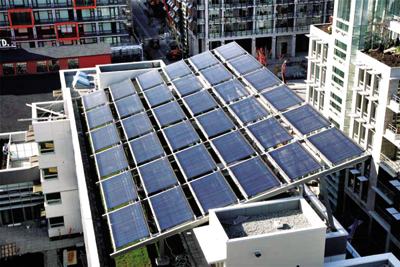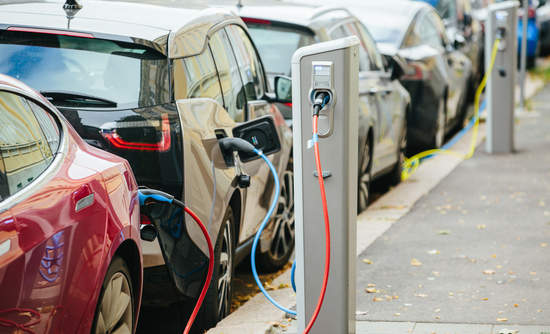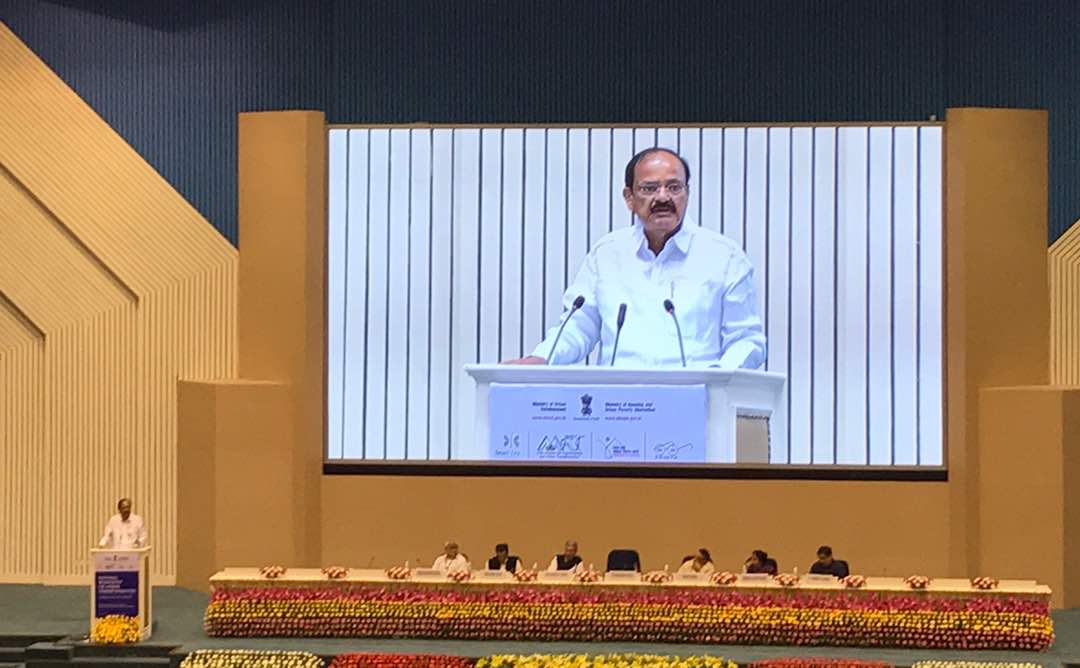
green entrepreneur and CMD, PEC Solutions Green Designs Pvt Ltd

green entrepreneur and CMD, PEC
Solutions Green Designs Pvt Ltd
Mala Singh, green entrepreneur and CMD, PEC Solutions Green Designs Pvt Ltd, outlines the potentials of an effective Green Building approach for transforming the existing and future communities into sustainable communities
It is widely accepted today that human activities are contributing to the phenomenon of Climate Change,which is evident across the world. Scientific evidences suggest that it is a causal factor in rising sea levels, increased occurrence of severe weather events, food shortages, hanging patterns of disease, severe water shortages and the loss of tropical forests. Most experts agree that over the next few decades, the world will undergo potentially dangerous changes in climate, which will have a significant impact on almost every aspect of our environment, economy and society. Hence, Responsible Development is a must to save our Mother Earth.
Energy guzzler
Among different sectors, Construction Sector is one which is utilizing the resources at a fast pace, thus causing a great impact on the environment. A major portion of the global energy use is attributed to the building sector, so there is a close link between energy consumption in buildings and climate change. Conventional methods of designing buildings and construction practices are not only consuming the natural resources but are also responsible for their contribution to the problems like greenhouse gas (GHG) emissions, water pollution, water shortage, excess waste generation and other associated impacts on health and environment. It is estimated that at present, buildings designed conventionally without considering sustainable approach produce as much as a third of the total global GHG emissions, primarily due to the use of fossil fuels in their operational phase.
Given the massive boom in the construction sector over the recent decades and the inadequacies in existing buildings, if nothing is done, the GHG emissions from buildings in India are likely to be more than double in the next 20 years. Therefore, if targets for GHG emissions reduction are to be met, it is clear that the decision-makers will have to tackle emissions in the building sector. In fact, the mitigation of GHG emissions from buildings must be made the cornerstone of India’s climate change strategy. In this backdrop, green building design approach presents itself as the most feasible solution.
Individual initiatives
 However, since no format has been prescribed by the Indian Government for green buildings development as of today, the only option remains the personal initiatives of passionate developers, who really wish to contribute their bit to conserve natural resources for saving the Mother Earth. Hence, only Responsible Developers can lead the Nation towards sustainable development and growth.
However, since no format has been prescribed by the Indian Government for green buildings development as of today, the only option remains the personal initiatives of passionate developers, who really wish to contribute their bit to conserve natural resources for saving the Mother Earth. Hence, only Responsible Developers can lead the Nation towards sustainable development and growth.
According to me, a “responsible developer” is a passionate business leader with an innovative mindset, who believes in transformation and shows an inclination for using sustainable strategies and new technologies to improve the quality of life and also believes in growing sustainably with the community.
Responsible developers can play a vital role in promoting sustainable development by incorporating sustainable strategies in their project development itself and reap the benefits of energy and water bill cost savings for themselves as well as for the residents. Besides direct savings, there are also intangible benefits to the Nation itself through conservation of the valuable natural resources.
Ratings as incentive
To promote Green Development in our country, Indian Green Building Council (IGBC – CII) and GRIHA are the two agencies, which have helped developers transform development footprint to Green. According to the IGBC, a building “which uses less water, optimizes energy efficiency, conserves the natural resources, generates less waste and provides healthier spaces for occupants as compared to a conventional building” is’a Green Building.
Basically, the concept behind green buildings is the rediscovery of Indian ethos or “panchabhutas”, i.e. the five elements of the nature – Prithvi, Jal, Agni, Vayu and Aakash. Although both types of buildings – conventional and green – look alike from outside, in terms of operation, green buildings perform better to achieve more cost savings in energy and water consumption. The Green Building Council rating systems are applicable for various categories differently like Green Homes, Commercial (Core & Shell, New Construction) Green Township rating, Existing Buildings, Green School & Green Landscape rating etc. Green buildings incorporate various green features like sustainable site planning, efficient water management techniques, energy-efficient design and fixtures, use of green energy sources, effective resource usage, proper waste management, indoor environment quality management, etc.
All those assure the healthiest possible environment, being created with minimum disruption to nature. Formation of a truly green and sustainable building is practically possible only if all sustainability parameters become an integral part of design planning through expert advisory and monitored till commissioning of the project. Accredited green and sustainability consultant companies can help achieve the goal of raising a Green building.
Basic elements
 Under sustainable site planning, measures are taken to preserve and improve green spaces by integrating various technologies like green roofs, green walls, natural landscape, etc. Effective Storm Water Management is an integral part of green building design to minimize rainwater runoffs. Grass pavers, vegetative surfaces or reflective materials are given more importance to reduce heat gain, so that the micro climatic temperature can be maintained. In green building construction, better Health and safety management practices are given due importance.
Under sustainable site planning, measures are taken to preserve and improve green spaces by integrating various technologies like green roofs, green walls, natural landscape, etc. Effective Storm Water Management is an integral part of green building design to minimize rainwater runoffs. Grass pavers, vegetative surfaces or reflective materials are given more importance to reduce heat gain, so that the micro climatic temperature can be maintained. In green building construction, better Health and safety management practices are given due importance.
Measures like rain water harvesting, use of water efficient fixtures, use of sewage treatment plant for treating gray water, recycling and reuse of treated water to reduce potable water use, etc., will help achieve water efficiency which is reflected as savings seen in water bills. Also, water conservation measures will add to our contribution as a responsible citizen to preserve the precious commodity.
While planning energy-efficient measures, optimizing building siting and design is a major component for building green which helps assure minimal solar heat gain through measures like passive solar orientation strategies, building massing, use of external shading devices, intelligent use of glass, effective insulation materials etc. Use of 3 star or 5 star-rated air conditioning systems, efficient lighting design, efficient fixtures like LED or CFL, use of clean energy sources like solar, wind energy, etc., help in reducing overall energy consumption and reducing GHG emissions indirectly by reducing the demand for conventional sources of energy. Final gain to the building occupant is reduction in electricity bills. In Green buildings, HCFC/ CFC free electrical equipment and low VOC chemical paints and indoor plants help maintain indoor environmental quality in the buildings, which improves the health and overall quality of life of the building occupants.
In green buildings, an effective waste management strategy by using 3R principle – Reduce-Reuse-Recycle is very beneficial to the building occupants as well as to the rest of the community.
So, the green building approach in individual buildings, residential complexes, townships or any other commercial/ retail spaces will help transform our existing and future communities into sustainable communities.





















